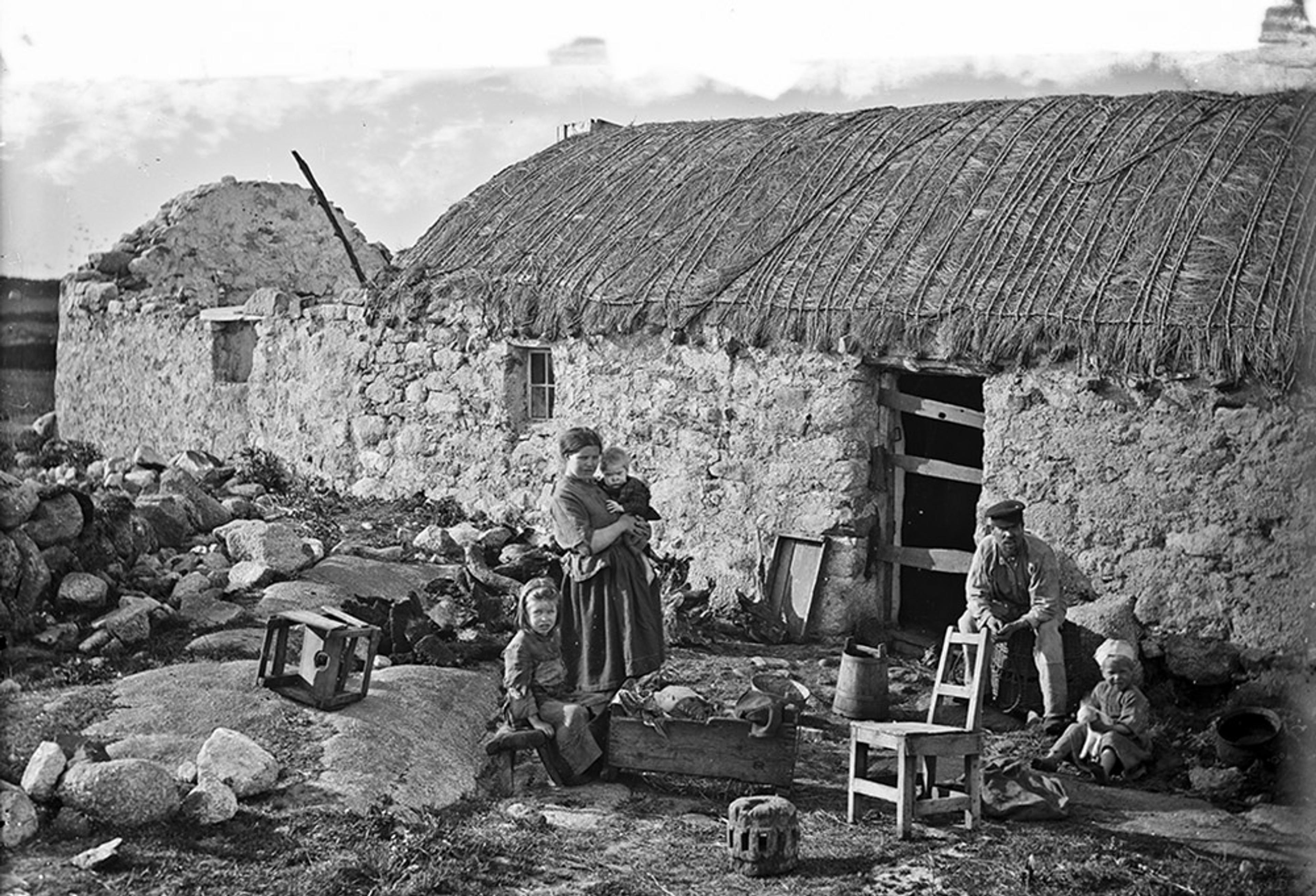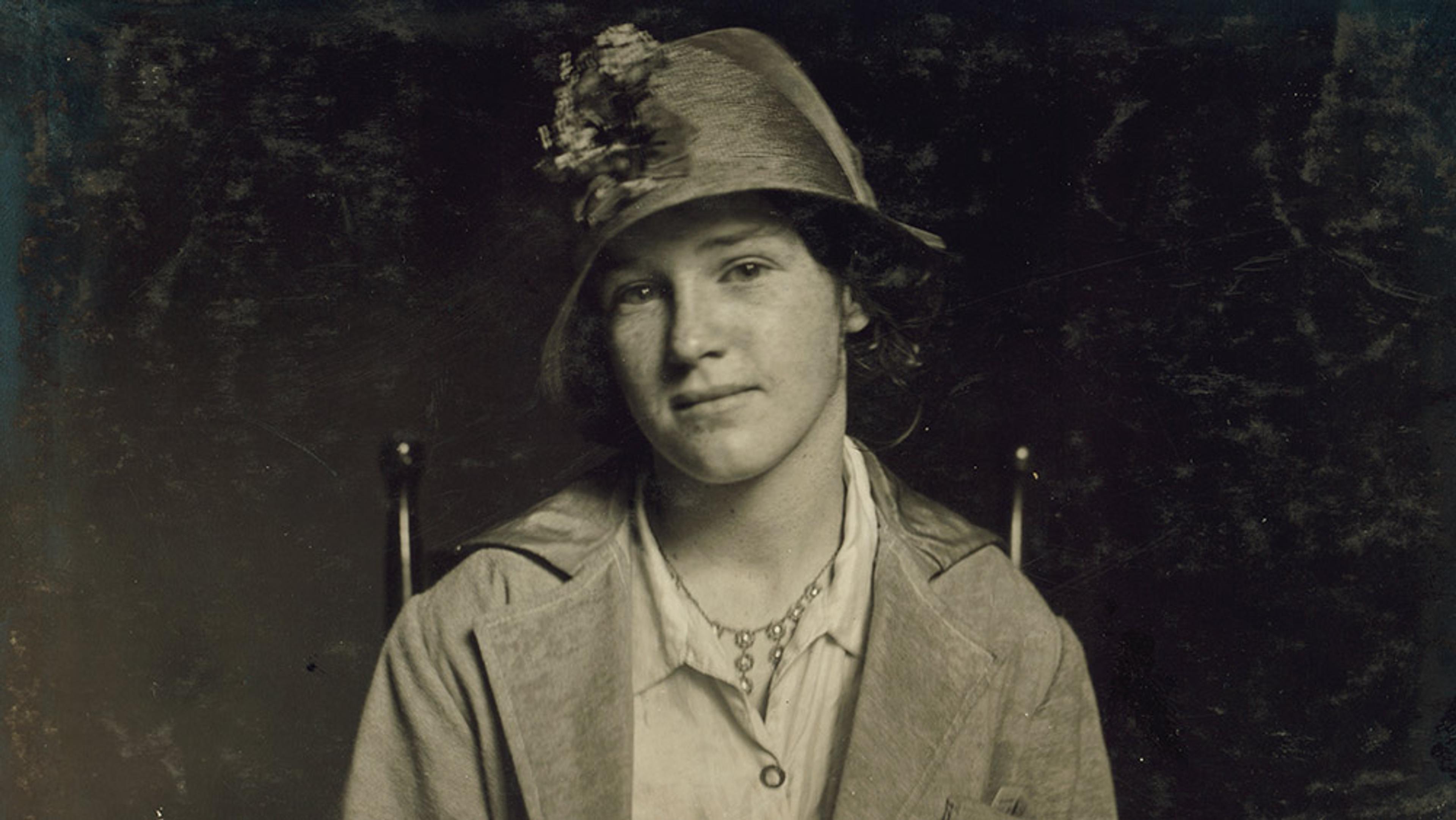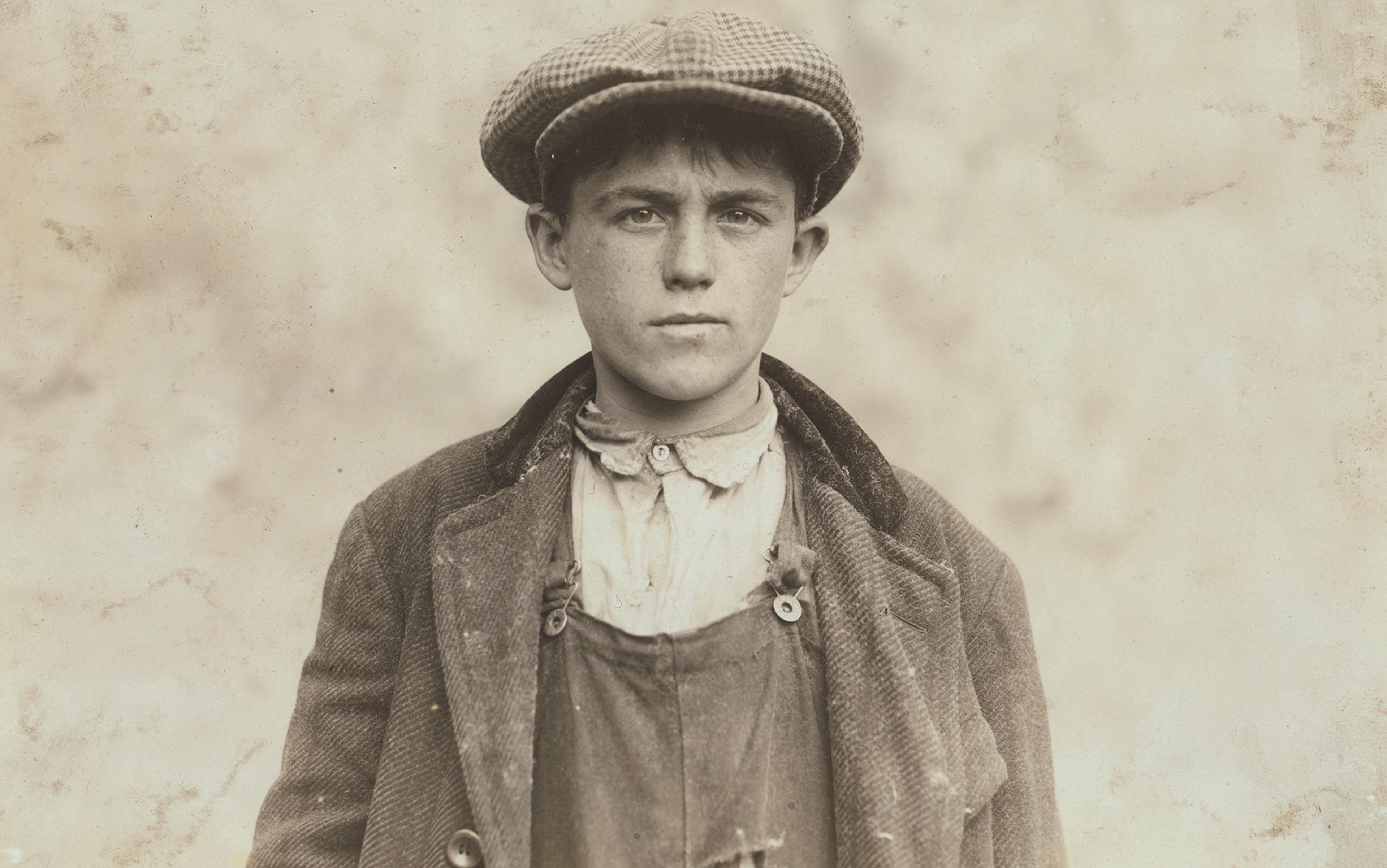From 1700 to the present, fully ten million Irish men, women and children left Ireland and settled abroad. Remarkably, this figure is more than twice the population of the Republic of Ireland today (4.8 million). It exceeds the population of the island of Ireland, north and south (6.6 million). And it is greater than the population of Ireland at its peak in 1845, on the eve of the Famine (8.5 million). Some 70 million people worldwide claim Irish descent, more than half of them in the United States, where Irish is the second most common ancestry after German.
In the United States, the Irish found a kind of mirror, or complement: a nation of immigrants for a nation of emigrants. Most people know about America’s distinctive claims to be a nation composed of immigrants. Ireland’s status as the nation of emigrants to the modern world is less well-known but perhaps as unique and historic. For most of the 19th and 20th centuries, Ireland had the highest emigration rate in Europe.
How are we to explain a historical phenomenon of this scale and impact? Irish emigration unfolded within two overlapping contexts: empire and diaspora. The imperial context helps to explain why people left Ireland and where they settled abroad. But only when empire is combined with the idea of diaspora do the full dimensions of Irish emigration emerge.
The life of James Connolly suggests the first of the essential contexts: Ireland’s place in the British empire. Connolly was born in an Edinburgh slum on 5 June 1868, the third son of John Connolly and Mary McGinn, who had emigrated to Scotland during or directly after Ireland’s great famine. The date of his parents’ departure from Ireland remains unclear, but they were married in Edinburgh on 20 October 1856, both aged 23. Connolly’s father was a labourer, and the family settled in the Cowgate district of Edinburgh, also known as ‘Little Ireland’.
At the age of 14, Connolly enlisted in the British army, falsifying his age. He served for six years, an experience that left him with a life-long hatred of the British empire and its military. Connolly deserted in 1888, perhaps because he had learned that his regiment was to be transferred from Ireland to India, and returned to Edinburgh where he became active in socialist affairs. In 1896, the Dublin Socialist Club invited him to become a paid organizer and he moved his family to Ireland.
Arrested in 1897 for leading a demonstration against the celebration of Queen Victoria’s Diamond Jubilee, Connolly was arrested again two years later for leading a protest against the Boer War, which had triggered a strong anti-imperialist movement in Ireland. In 1903, unable to sustain his family in Dublin, Connolly emigrated to the US, where his wife and children joined him the following year.
The more extreme episodes of Irish emigration certainly make sense in the context of the British empire, its global reach, its pathways, its possibilities and pressures to move. During the Famine, for example, Britain experimented with various relief measures, from selling corn at market price to distributing free food in soup kitchens. Then, in 1847, the British government decided to place the full burden of relief on Ireland’s locally funded poor law unions. For a country where tenants could not pay their rent, and landlords were falling into bankruptcy, it was a catastrophic policy. Even the moderate Irish nationalist leader Isaac Butt felt compelled to ask: ‘If Cornwall had been visited with the scenes that have desolated Cork, would similar arguments [have] been used?’ Others described the situation with less restraint.

A tenant farmer and family left homeless after eviction in Gweedore, Co Donegal, c1880-1900. Photo by Robert French from the Lawrence Collection, National Library of Ireland.
From exile in the US in 1861, the revolutionary Irish nationalist John Mitchel wrote of the Famine that ‘a million and a half of men, women and children were carefully, prudently, and peacefully slain by the English government’. Potatoes had failed all over Europe, Mitchel pointed out, yet there was famine only in Ireland. ‘The almighty, indeed, sent the potato blight,’ he concluded, ‘but the English created the Famine.’ No historian today would accept so bald a charge of genocide, but at the time Mitchel’s words mobilised Irish emigrants around the world.
Ireland’s role in the British empire is itself a story of considerable interest. Ireland was a colony of the empire – or, at best, a distinctly subordinate partner in the United Kingdom. Yet Irish people also played prominent roles in conquering, populating and governing other British colonies overseas. Some historians have detected a paradox here. Yet there is nothing anomalous in members of one colonised people helping to govern their homeland or other parts of the same empire.
In fact, as a rule, European colonisation in Asia, Africa and the Americas relied on local partners and alliances. Indians, for example, helped to govern India, and they also served in huge numbers in the British army both at home and abroad. Ireland, nonetheless, had a highly distinctive position within the empire. Unlike other colonies, it sent representatives to parliament; and the Irish were to be found in every part of the empire – not just as soldiers, administrators and doctors in India and missionaries in Asia and Africa but also, in much larger numbers, as migrants and settlers in North America, Australia and New Zealand.
Those Irishmen who served the empire as soldiers did so in a variety of ways. Brigadier Reginald Dyer, born to an Irish father in the Punjab and educated at Middleton College in County Cork, commanded the machine-gunners who perpetrated the infamous massacre in the Punjabi city of Amritsar in 1919. Michael O’Dwyer, lieutenant-governor of the Punjab at this time, was the product of a prominent Irish Catholic from County Tipperary. Field-Marshal Sir Henry Wilson, a native of County Longford who made his way up through the ranks after fighting in the Boer War, became chief of the imperial general staff in 1918.
Imperial service took Irishmen around the world and it could kill them, or it could give them a career
For every Irish-born British officer, there were dozens more who, like Connolly, took ‘the king’s shilling’, enlisted in the British army for economic rather than patriotic reasons and, often, emerged embittered or radicalised from the experience. Among them were Joseph O’Sullivan and Reggie Dunne, who served in the British army during the First World War. The war radicalised O’Sullivan and Dunne, and upon its conclusion they joined the paramilitary Irish Republican Army (IRA). Together, they assassinated Sir Henry Wilson outside his home in London in 1922.
Imperial service took Irishmen around the world and it could politicise them in different directions, it could kill them, or it could give them a footing to a career. But it was never the heart of the Irish emigration history. The great majority of Irish emigrants were not imperial servants but ordinary men, women and children. This vast movement of people must be approached not simply as the sum of the life stories of individuals, but as a collective phenomenon that has helped define the Irish as a people. For all the varieties and disparities within it, the experience of Irish emigration as a mass movement has identifiable and distinct contours. It can also help us begin to understand the very idea of diaspora and its role in the world.
From 1700 to the present, emigration from Ireland to the rest of the world came in a series of relentless waves. The kind of Irish emigration of interest here, as a collective movement, began in the 18th century in Ulster and other parts of Ireland that had been colonised by British settlers. The descendants of Scottish colonists – who came to be known in America as the Scots-Irish – left Ulster to practise their religion and to seek land, the same reasons that had brought their forebears to Ireland a few generations earlier.
Between 1700 and 1776, at the onset of the American Revolution, from 60,000 to 100,000 of these mostly Presbyterian emigrants settled in the mainland American colonies. They constituted the largest group of settlers to North America, followed by Germans, Scots and English. After the Peace of Paris in 1783, their migration resumed, and by 1815 as many as 100,000 more had arrived. The majority settled in Pennsylvania, which offered land on attractive terms and exceptional religious toleration. From Pennsylvania, they moved down through the Southern backcountry, all the way to Georgia. Several of their descendants became US presidents, starting with Andrew Jackson, whose parents arrived in the Carolinas from Ulster in 1765, two years before he was born, and who was the first US president not born into the colonial elite.
Before the start of the great Famine in 1845, the pace and volume of Irish emigration increased sharply. From 1815 to 1845, almost 1 million Irish people moved to North America, settling in Canada and in the towns and cities of the US Northeast. In addition, by 1841, some 400,000 Irish-born lived in Britain. Ulster Presbyterians continued to dominate the transatlantic flow until the 1830s, at which point Catholic immigration from Ireland overtook Protestant. From the 1830s through the remainder of the 19th century, Catholics accounted for more than 80 per cent of the Irish who crossed the Atlantic.
In the predominantly rural Ireland, opportunities for employment were scarce and the possibility of acquiring land to own slim. Rapid population expansion coincided with widespread land enclosure, whereby landlords and commercial farmers consolidated landholdings as part of converting land use from tillage to pasture. In essence, landlords were replacing people with animals, and evicting their tenants. Because Ireland lacked cities and industry, the rural poor who had been driven off the land had little choice but to emigrate abroad.
One in every two American immigrants in the 1840s was Irish, and one in every three in the 1850s
Between 1846 and 1855, during the Famine crisis, more than 1 million Irish people died of starvation and famine-related diseases. Another 2.1 million people left the country – more than in the previous two and a half centuries combined. About 1.5 million of these emigrants went to the US. More than 300,000 went to Canada, and many of them later moved southward to the US. Another 300,000 went to Great Britain, and tens of thousands went to Australia and New Zealand. Connolly’s parents were among those who left Ireland for Scotland in this period.

Evevlyn Casey, 14-year-old Irish girl working in Fall River, Massachusetts, June 1916. Photograph by Lewis Hine/Library of Congress.
In the 1840s, the Irish accounted for 45 per cent of the total number of immigrants to the US. In the 1850s, the Irish and the Germans each made up about 35 per cent. Put another way, almost one in every two American immigrants in the 1840s was Irish, and one in every three in the 1850s. But, of course, Germany’s population was much larger than Ireland’s. In 1861, the German Confederation had a population of about 35 million, compared with only 5.8 million in Ireland. Yet during this time the number of Irish-born and German-born residents of the US was roughly equal. For every Irish-born person in the US that year, only five remained at home, whereas the corresponding ratio for Germany was about one to 30.
In the post-Famine era (1856-1921) more than 3 million Irish emigrants went to the US, 200,000 to Canada, 300,000 to Australia and New Zealand, and as many as 1 million to Britain. By the turn of the 20th century, two out of every five Irish-born people were living overseas. By the time Connolly left Ireland for America in 1903, Irish emigration had become (in the words of one historian) ‘a massive, relentless, and efficiently managed national enterprise’.
Throughout the post-Famine era, Ireland bucked the trend of social and economic history elsewhere in the West. In the US and western Europe, this was a period of massive population growth, industrialisation and urbanisation. Ireland’s population, by contrast, was cut in half, its industrial base contracted, and the number of people living in cities declined. Migration from the countryside to cities was common everywhere, but because Ireland lacked cities or industries to absorb its displaced rural population, those who left the countryside had little choice but to move abroad.
Pressure for land remained the main source of emigration. Before the Famine, the Irish had married young, but now they delayed marriage until they had access to land – often a very long wait. Everyone who has grown up in Ireland since the Famine has known that, come early adulthood, they would have to grapple with the decision of whether to stay in the country or leave. For many young women in particular, leaving Ireland came as a welcome escape from the stultifying constraints of rural life. Uniquely among European emigrants in the late-19th century, young single women emigrated from Ireland in the same numbers as men.
In the 20th century, the underlying causes of Irish emigration remained constant, but Britain overtook the US as the primary destination. Lack of employment in the US during the Great Depression and the disruption of transatlantic shipping during the Second World War proved decisive. Departures to the US surged again in the 1950s, but from the 1920s onward, three-quarters of all Irish emigrants went to Britain.
Emigration acted as a social safety valve by reducing poverty, unemployment and class conflict
In the 1960s and ‘70s, emigration from the Republic of Ireland declined significantly and, for the first time since the Famine, Ireland’s population increased. This respite proved brief. High Irish unemployment in the 1980s again triggered a decade of emigration. In the 1990s, Ireland’s ‘Celtic Tiger’ economy attracted, for the first time, large numbers of foreign-born immigrants as well as a return of previous emigrants. For a moment, it seemed that Ireland might reverse course and become a nation of immigrants, a tantalising prospect that, however, vanished with the 2008 financial crisis.
The long history of Irish emigration featured winners as well as losers. For the most part, those who managed to stay in Ireland did rather well. Emigration might have inhibited economic development in some ways – by reducing the demand for goods and services, for example, and by lessening the need for rural innovation. But by significantly lowering the size of the population and competition over resources, and by attracting remittances from abroad, emigration raised the standard of living at home. Above all, emigration acted as a social safety valve by reducing poverty, unemployment and class conflict. A big untold story in the history of Irish emigration is the benefits it produced for those who stayed behind.
The vast majority of Irish emigrants settled (in order) in the US, Great Britain, Canada, Australia and New Zealand. Smaller numbers went to South Africa and Latin America. All but Latin America had a current or previous connection to the British empire. Empire alone, however, does not explain Ireland’s mass emigration.
The noun diaspora is derived from the verb diaspeiro – a compound of dia (over or through) and speiro (to scatter or sow). It first appeared around 250 BCE in the Greek translation of the opening books of the Hebrew Bible, known as the Septuagint, produced by Jewish scholars based in Alexandria.
In the Septuagint, diaspora connotes a condition of spiritual anguish accompanying God’s dispersal of those who disobeyed His word. ‘The Lord will cause you to be defeated before your enemies; you shall go out against them one way and flee before them seven ways. You shall become an object of horror to all the kingdoms of the earth,’ is how Deuteronomy 28:25 puts it.
The New Shorter Oxford English Dictionary, citing this passage, says diaspora conveys two related meanings. One is a social process (‘the dispersion of Jews among the Gentile nations’), and the other is a social entity (‘all those Jews who lived outside the biblical land of Israel’). As an example of the latter usage, the New Shorter OED cites the case of the Irish in the US: ‘the Famine, the diaspora and the long hatred of Irish Americans for Britain’.
For a long time, the term ‘diaspora’ was confined to the dispersal and exile of the Jews. But over the course of the 20th century, it gradually expanded to include the involuntary dispersal of other populations, including Armenians, people of African descent, and the Irish. In reference to the Jewish experience, it made theologically specific claims about human suffering, salvation and the direction of history. Applied to other groups, the term must be handled carefully.
Scholars have exerted enormous effort to define diaspora, compiling elaborate typologies and checklists. Yet abstract models can take us only so far in understanding historical experiences.
Diaspora is neither a process nor a thing to be defined, but rather an idea, a conceptual framework, through which people seek to make sense of the experience of emigration. Three overlapping elements – relocation, connection, and return – constitute the idea of diaspora. All three elements do not have to be present at once, and people do not necessarily need to use the word ‘diaspora’ to think about emigration as a diasporic experience.
Diaspora provides an essential framework for understanding emigration during the Irish Famine era
Relocation refers to population movement, regardless of the subsequent history of settlement abroad. In this sense, diaspora typically refers to forced rather than voluntary population movements, Jewish banishment and African slavery, for example.
Connectivity refers to the links and interactions that emigrants develop abroad. It’s not enough for emigrants to simply involve themselves in the affairs of their homeland, which is, after all, commonplace. But when the connections and interactions among the communities involve a web of widely scattered groups, we have nodes within a global network. Connectivity of this sort can be an important framework for understanding emigration history.
The third and final element of diaspora is return. The idea of diaspora features a homeland, real or imagined. Return to this homeland can be literal, as in the Zionist movement. More often, it is metaphorical, spiritual, or political, but no less potent for that.
Diaspora provides an essential framework for understanding emigration during the Irish Famine era. This population movement was triggered by a catastrophic event, it consisted of mostly involuntary emigration, and the emigrants dispersed to several destinations. They built connections not only between their new countries and Ireland, but also among the network of countries where they settled. And they nurtured a strong sense of banishment and exile.
Irish emigrants built diasporic connections across the globe. Nationalists in 19th-century New York, Toronto and Sydney, for example, worked together to liberate their homeland. Labour activists in New York, chief among them Patrick Ford in the late 19th century and Connolly in the early 20th, stood at the vanguard of an international Irish radicalism. ‘The cause of the poor in Donegal,’ Ford once declared, ‘is the cause of the factory slave in Fall River.’ Connolly, for his part, drew no distinction between the working class of New York and Dublin. The diaspora had made Ford and Connolly internationalists, and radicalised them against the global role of the British empire.
Especially in the two generations after the Famine, Irish emigrants fostered a conviction that only return could redress the wounds of history. Irish Americans, in particular, cherished a strong sense of involuntary exile in this way. Ironically, though, Irish emigrants almost never actually returned to Ireland; only Jews returned from the US at a lower rate in the early 20th century. For the Irish to have gone home would have meant abandoning the sense of exile that helped to sustain their new-found ethnic identity, and their diasporic nationalism. Just as losing a war can produce more group cohesion than winning one, exile could be empowering.
For Irish emigrants, the exile motif had extraordinary potency. At its heart lay two related beliefs: that the emigrants had been banished by the British rather than leaving voluntarily, and that the wounds inflicted by British misrule continued to plague them abroad, explaining their ongoing exploitation and poverty. Neither of these beliefs could withstand close scrutiny. Ireland was a British colony, to be sure, but with the exception of the Famine era, British policies rarely played a direct role in Irish emigration. And, despite their initial poverty, the American Irish prospered within a couple of generations; in the British settler colonies they did even better.
How, then, do we explain the prevalence of the Irish exile motif?
In the US, the Irish deployed anti-British sentiment in the name of republican principles
According to the most influential interpretation, the origins of this motif are to be found in the pre-migration culture of Ireland itself. The rural poor, deeply attached to the land and to their local communities, did not want to leave Ireland and they frowned upon those who did so. They were predisposed to see emigration as banishment rather than self-improvement even when it benefited them economically.
In the US especially, the Irish put this sense of exile to political use. They deployed anti-British sentiment to demonstrate their loyalty to American republican principles. And the powerful nationalist movements they organised for the liberation of Ireland, far from calling this loyalty into question, consolidated their reputation as the most politically adept of immigrant groups.
Connolly, however, was not content with being a nationalist in exile. In fact, he was one of the few Irish Americans who returned to Ireland. After settling in the US in 1903, Connolly spent most of the next seven years as an activist in Daniel De Leon’s Socialist Labor Party. Connolly never saw eye to eye with De Leon, and eventually found more congenial homes in the Industrial Workers of the World and in Eugene V Debs’s Socialist Party of America. But for Connolly there was little solace in exile: he never climbed out of poverty in the US and, in 1910, he moved his family back to Ireland.
On his return to Dublin, Connolly joined the Socialist Party of Ireland, playing a prominent role as an Irish trade union leader. During the First World War, acting on the old adage that ‘England’s difficulty is Ireland’s opportunity’, a group of anti-imperialist nationalists decided to strike for independence. Connolly joined the Easter 1916 uprising, hoping to infuse Irish nationalism with a spirit of social radicalism.
On 24 April, Connolly led his socialist militia, the Irish Citizen Army, into the revolutionary headquarters at the General Post Office in Dublin, where the rebels held out for the next week before surrendering. Convicted by a British court martial of treason, Connolly – one-time soldier, international socialist, anti-imperialist revolutionary, serial Irish emigrant, and returnee – was executed by firing squad on 12 May 1916.
We know more about him than about most Irish emigrants because he was a political activist and became a revolutionary martyr. But like all his fellow emigrants, Connolly was part of a collective movement that unfolded within the contexts of empire and diaspora. Each of the 10 million emigrants who left Ireland in the modern era was a unique individual. All were part of one of the great mass emigrations of human history.






